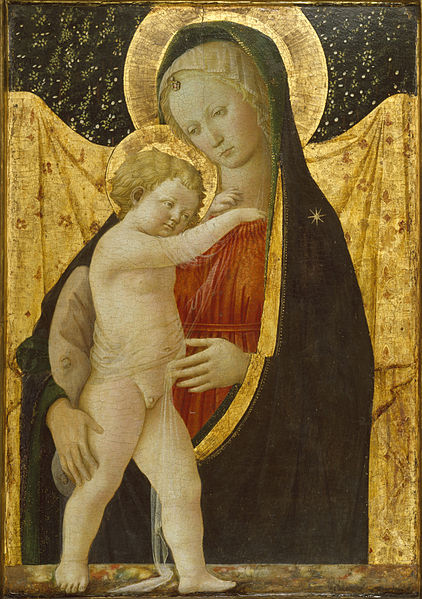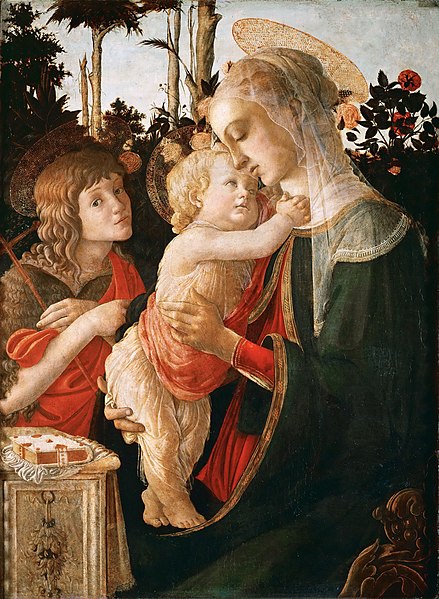Filippo Lippi, also known as Lippo Lippi, was an Italian painter of the Quattrocento and a Carmelite priest. He was an early Renaissance master of a painting workshop, who taught many painters. Sandro Botticelli and Francesco di Pesello were among his most distinguished pupils. His son, Filippino Lippi, also studied under him and assisted in some late works.
Self-portrait of Fra' Filippo Lippi (1452)
Devotional image of the Madonna and Child before a golden curtain, the Workshop of Filippo Lippi (c. 1446–1447), Walters Art Museum
Adoration in the Forest (1459)
Madonna and Child (1440–1445), tempera on panel, National Gallery of Art, Washington, D.C.
Alessandro di Mariano di Vanni Filipepi, better known as Sandro Botticelli or simply Botticelli, was an Italian painter of the Early Renaissance. Botticelli's posthumous reputation suffered until the late 19th century, when he was rediscovered by the Pre-Raphaelites who stimulated a reappraisal of his work. Since then, his paintings have been seen to represent the linear grace of late Italian Gothic and some Early Renaissance painting, even though they date from the latter half of the Italian Renaissance period.
Probable self-portrait of Botticelli, in his Adoration of the Magi (1475).
Detail from Botticelli's most famous work, The Birth of Venus (c. 1484–1486)
Via Borgo Ognissanti in 2008, with the eponymous church halfway down on the right. Like the street, it has had a Baroque makeover since Botticelli's time.
Madonna and Child with St. John the Baptist, c. 1470–1475, Louvre








